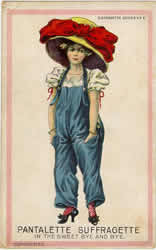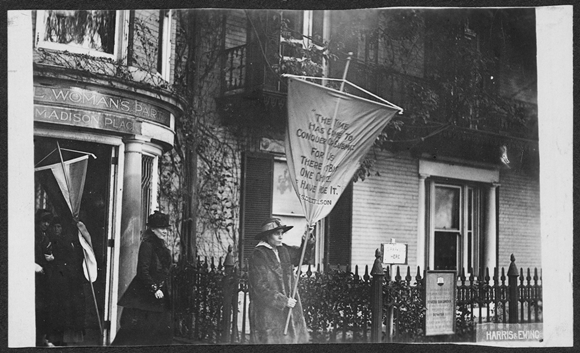Tactics and Techniques of the National Woman’s Party Suffrage Campaign
 Something that caught my eye as I was wandering through the Library of Congress photographs of the women’s movement…
Something that caught my eye as I was wandering through the Library of Congress photographs of the women’s movement…
Tactics and Techniques of the National Woman’s Party Suffrage Campaign
Summary
Founded in 1913 as the Congressional Union for Woman Suffrage (CU), the National Woman’s Party (NWP) was instrumental in raising public awareness of the women’s suffrage campaign. Using a variety of tactics, the party successfully pressured President Woodrow Wilson, members of Congress, and state legislators to support passage of a 19th Amendment to the U.S. Constitution guaranteeing women nationwide the right to vote. In so doing, the NWP established a legacy defending the exercise of free speech, free assembly, and the right to dissent.The NWP effectively commanded the attention of politicians and the public through its aggressive agitation, relentless lobbying, clever publicity stunts, and creative examples of civil disobedience and nonviolent confrontation. Its tactics were versatile and imaginative, drawing inspiration from a variety of sources-including the British suffrage campaign, the American labor movement, and the temperance, antislavery, and early women’s rights campaigns in the United States.
Traditional lobbying and petitioning were a mainstay of NWP members, but these activities were supplemented by other more public actions-including parades, pageants, street speaking, and demonstrations. The party eventually realized that it needed to escalate its pressure and adopt even more aggressive tactics. Most important among these was picketing the White House over many months, leading to the arrest and imprisonment of many suffragists.
The willingness of NWP pickets to be arrested, their campaign for recognition as political prisoners rather than as criminals, and their acts of civil disobedience in jail shocked the nation and brought attention and support to their cause. Through constant agitation, the NWP effectively compelled President Wilson to support a federal woman suffrage amendment. Similar pressure on national and state legislators led to the ratification of the 19th Amendment in 1920.

